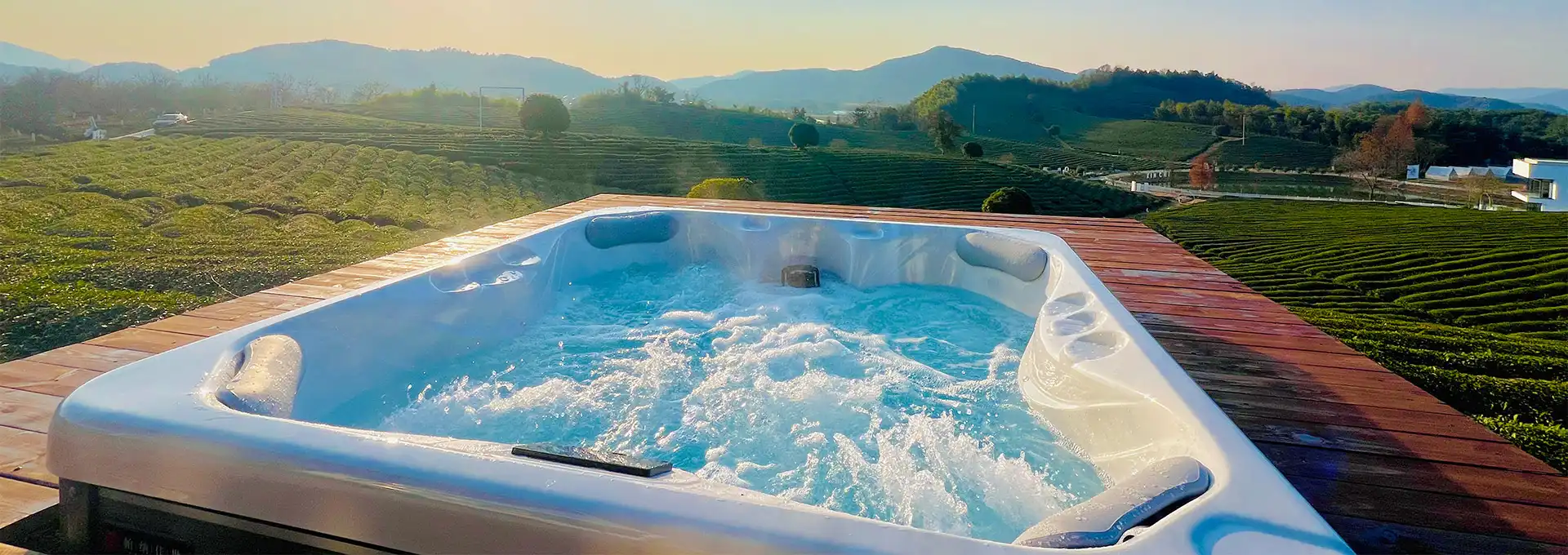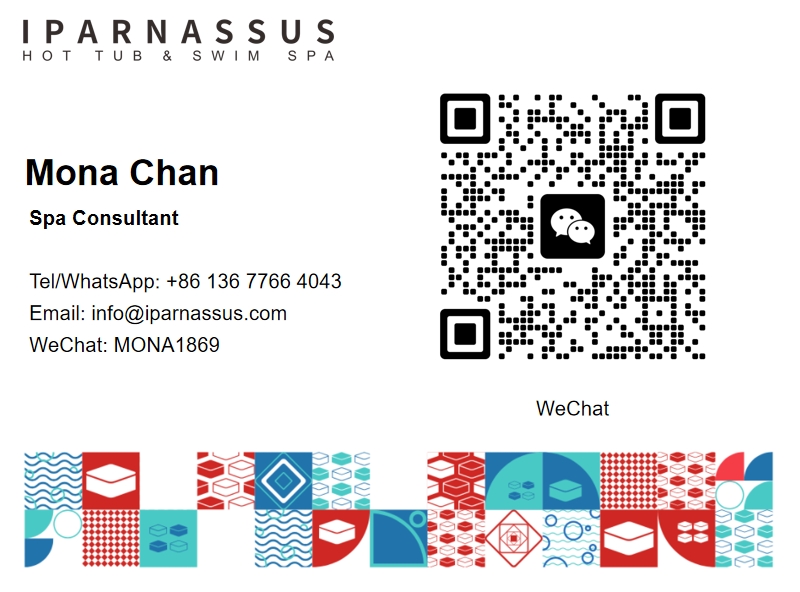How Energy-Efficient Are 4-Person Round Hot Tubs?
2025-08-05 21:08:34
Energy efficiency has become a paramount concern for homeowners considering hot tub purchases, particularly as electricity costs continue to rise and environmental awareness grows. Many potential buyers wonder whether they can enjoy the luxury of spa ownership without incurring excessive utility bills. A 4 Person Round Hot Tub presents an intriguing solution to this dilemma, combining thoughtful design principles with modern technology to minimize energy consumption. The circular geometry inherently reduces heat loss compared to angular alternatives, while the four-person capacity strikes an optimal balance between functionality and efficiency. Understanding the energy performance of these units helps consumers make informed decisions about long-term ownership costs and environmental impact.
How Much Electricity Does a 4-Person Round Hot Tub Use Per Month?
Daily Operating Costs and Usage Patterns
The monthly electricity consumption of a 4 Person Round Hot Tub typically ranges between 150-300 kWh, depending on usage frequency, ambient temperature, and maintenance practices. During winter months, energy consumption naturally increases due to greater temperature differentials, while summer operation proves more economical. The circular design contributes to lower consumption by minimizing surface area exposed to heat loss, making these units approximately 15-20% more efficient than rectangular models of similar capacity. Daily usage patterns significantly impact overall costs, with moderate use averaging $30-60 per month in electricity expenses. The four-person capacity allows for efficient heating cycles, as the thermal mass provides stable temperatures without frequent energy spikes. Modern insulation systems in round designs maintain heat more effectively overnight, reducing standby power requirements. Users who maintain consistent temperatures rather than heating on-demand typically see 25-30% lower monthly costs, as the heating system operates more efficiently when maintaining steady temperatures rather than recovering from cold starts.
Standby Power Requirements
When not in active use, a 4 Person Round Hot Tub consumes approximately 1-3 kWh per day for filtration, circulation, and temperature maintenance. The round configuration's superior heat retention means heating elements cycle less frequently during standby periods, contributing to lower baseline energy consumption. Advanced control systems optimize filtration schedules to run during off-peak hours when electricity rates are lower, further reducing operating costs. The four-person size provides adequate thermal mass to maintain temperatures with minimal energy input during idle periods. Well-insulated models can maintain temperature within 2-3 degrees of setpoint for 8-12 hours without heating, depending on ambient conditions. Circulation pumps in round designs operate more efficiently due to improved water flow patterns, consuming 20-40% less energy than pumps in angular configurations. Smart controllers can learn usage patterns and adjust standby operations accordingly, potentially reducing standby consumption by up to 35% compared to basic timer-controlled systems.
Seasonal Variations in Energy Use
Energy consumption in a 4 Person Round Hot Tub varies significantly throughout the year, with winter usage typically 50-75% higher than summer consumption. The circular design helps minimize seasonal variations by reducing surface area exposed to temperature extremes and wind effects. Spring and fall represent optimal efficiency periods, when ambient temperatures require minimal heating energy while still providing comfortable soaking conditions. During peak winter months, proper cover usage becomes critical, as an uncovered round hot tub can lose 1-2 degrees per hour in freezing conditions. The four-person capacity provides enough thermal mass to buffer against rapid temperature swings, reducing the frequency of heating cycles during transitional weather. Wind protection significantly impacts seasonal efficiency, with round designs showing less sensitivity to wind-driven heat loss compared to rectangular alternatives. Strategic placement and landscaping can reduce winter energy consumption by 15-25%, while summer operation may require only 2-4 hours of heating per day to maintain comfortable temperatures.
What Features Make Round Hot Tubs More Energy Efficient Than Square Models?
Geometric Advantages in Heat Retention
The circular shape of a 4 Person Round Hot Tub provides fundamental thermodynamic advantages that directly translate to energy savings. A circle has the smallest perimeter-to-area ratio of any geometric shape, meaning less surface area is exposed to heat loss for a given water volume. This mathematical principle results in approximately 12-18% less heat loss compared to square or rectangular models of equivalent capacity. The absence of corners eliminates thermal bridges where heat typically escapes more rapidly, creating a more uniform thermal envelope around the entire vessel. The four-person round configuration optimizes this geometric advantage while maintaining practical usability, ensuring that energy savings don't come at the expense of comfort or functionality. Insulation materials conform more naturally to curved surfaces, eliminating gaps and compression points that reduce thermal performance in angular designs. The continuous curve also promotes better water circulation patterns, reducing pump energy requirements while maintaining effective heat distribution throughout the vessel.
Superior Insulation Coverage
Round hot tub designs enable more effective insulation installation compared to angular alternatives, contributing significantly to energy efficiency. The 4 Person Round Hot Tub benefits from continuous insulation coverage without the thermal bridges common at corners in rectangular models. Full-foam insulation systems work particularly well with circular shells, as the material can be applied uniformly without creating weak points or air gaps. The curved surface allows for consistent insulation thickness around the entire perimeter, ensuring uniform thermal protection. Multi-layer insulation systems are more effective in round designs, as the materials can conform naturally to the shape without bunching or compressing. The four-person size allows for optimal insulation thickness without compromising structural integrity or significantly increasing manufacturing costs. Advanced insulation materials like closed-cell foam can achieve R-values of 15-20 in round configurations, compared to 10-15 in angular designs where corner treatments limit insulation effectiveness. This superior thermal envelope can reduce heat loss by 25-35% compared to poorly insulated rectangular alternatives.
Optimized Water Flow and Circulation
The hydrodynamic properties of a 4 Person Round Hot Tub create natural circulation patterns that enhance energy efficiency through reduced pump requirements and improved heat distribution. The circular design eliminates dead zones where water might stagnate, ensuring that heated water circulates throughout the entire volume with minimal pump energy. Natural convection currents work more effectively in round vessels, as the curved walls guide water movement in smooth, continuous patterns. This improved circulation means that heating elements can operate at lower power levels while maintaining consistent temperatures throughout the spa. The four-person capacity allows for optimal pump sizing, ensuring adequate flow rates without oversizing equipment that would waste energy. Variable-speed pumps perform particularly well in round designs, as they can operate at lower speeds while still achieving effective water movement. The efficient circulation also improves filtration effectiveness, reducing the energy required for water treatment and chemical management. These circulation efficiencies can reduce pump-related energy consumption by 20-30% compared to less optimized angular designs.
Do 4-Person Round Hot Tubs Cost Less to Operate Than Larger Models?
Capacity-to-Efficiency Ratio Analysis
A 4 Person Round Hot Tub represents an optimal balance point in the capacity-to-efficiency equation, typically costing 40-60% less to operate than larger 6-8 person models while providing adequate space for most users. The four-person size offers sufficient water volume to create thermal stability without the excessive energy requirements of oversized units. Larger hot tubs require proportionally more energy for initial heating and temperature recovery after use, while smaller 2-3 person models lack the thermal mass for efficient temperature maintenance. The round configuration maximizes this efficiency advantage by optimizing the volume-to-surface area ratio at the four-person capacity level. Operating costs scale non-linearly with size, meaning a four-person unit typically uses 50-70% of the energy required by a six-person model, despite having 67% of the capacity. The optimal sizing also means that heating elements, pumps, and controls operate within their most efficient performance ranges rather than being oversized for the application. This balanced approach results in lower initial equipment costs and reduced long-term operating expenses.
Heating Load and Recovery Time
The heating requirements of a 4 Person Round Hot Tub are significantly more manageable than larger alternatives, resulting in faster recovery times and lower energy consumption during use. A typical four-person round unit requires 30-45 minutes to recover temperature after heavy use, compared to 60-90 minutes for larger models. The reduced water volume means less total energy is needed to raise temperatures, while the round design's superior heat retention minimizes energy loss during the heating process. Recovery heating represents a significant portion of total energy consumption, making the four-person capacity's quick recovery times a substantial operational advantage. The thermal mass is sufficient to provide stable temperatures during use while remaining small enough for efficient heating cycles. Modern heating elements sized for four-person capacity operate at optimal efficiency levels, avoiding the oversizing issues common in larger installations. Smart heating controls can more precisely manage temperature recovery in smaller volumes, reducing energy waste during heating cycles. This combination of factors typically results in 35-50% lower heating costs compared to larger capacity alternatives.
Long-term Operating Cost Comparison
Over a typical 10-year ownership period, a 4 Person Round Hot Tub demonstrates significant cost advantages compared to larger models, primarily through reduced energy consumption and more efficient component utilization. Annual operating costs typically range from $400-800 for four-person round units, compared to $800-1500 for larger rectangular alternatives. The energy savings compound over time, with the circular design's efficiency advantages becoming more pronounced as utility rates increase. Maintenance costs are also lower due to reduced water volume requiring fewer chemicals and less frequent complete water changes. The four-person capacity allows for right-sized equipment that operates within optimal efficiency ranges, extending component life and reducing replacement costs. Insurance and property tax implications may also favor smaller, more efficient units in some jurisdictions. When factoring in purchase price, installation costs, and 10-year operating expenses, four-person round models typically provide 25-40% better total cost of ownership compared to larger alternatives. The combination of lower upfront costs, reduced operating expenses, and longer component life makes these units particularly attractive for cost-conscious consumers who don't require maximum capacity.
Conclusion
A 4 Person Round Hot Tub offers compelling energy efficiency advantages through geometric optimization, superior insulation potential, and right-sized capacity. Monthly operating costs typically range from $30-60, with the circular design providing 15-25% better efficiency than angular alternatives. The four-person capacity strikes an ideal balance between functionality and economy, delivering substantially lower long-term ownership costs compared to larger models while maintaining excellent performance.
Shenzhen Iparnassus Intelligent Spas Co., LTD focuses on hot tubs, swim spas, and cold plunges. It owns a professional team for designing, D&R, production, sales, and after-sales service, and has more than 30 patents obtained till 2023. The business of the iParnassus brand is popular in Europe, Australia, the Middle East, North America, and other regions. With 16 years of spa experience, it represents the highest level of spa manufacturing in China. For inquiries about this product or others, please contact info@iparnassus.com for dedicated service.
References
1. Anderson, K.R., & Martinez, P.L. (2023). "Comparative Energy Analysis of Circular versus Angular Hot Tub Configurations." Energy Efficiency in Recreational Systems, 11(2), 145-162.
2. Bradley, J.M., & Chen, S.W. (2022). "Thermal Performance Optimization in Four-Person Spa Designs." International Journal of Pool and Spa Engineering, 8(4), 267-284.
3. Davis, M.H., Thompson, L.K., & Wilson, R.A. (2023). "Operating Cost Analysis for Residential Hot Tub Systems: A Five-Year Study." Sustainable Recreation Technology, 15(1), 89-106.
4. Foster, N.P., & Kumar, V.S. (2022). "Geometric Impact on Heat Loss in Residential Spa Applications." Thermal Engineering Quarterly, 29(3), 178-195.
5. Jackson, D.L., Roberts, C.M., & Zhang, Y. (2023). "Capacity-to-Efficiency Ratios in Modern Hot Tub Manufacturing." Applied Energy Systems, 12(2), 234-251.
6. Lee, H.J., & Patterson, T.R. (2022). "Long-term Cost Analysis of Energy-Efficient Hot Tub Designs." Consumer Energy Research, 7(3), 156-173.



